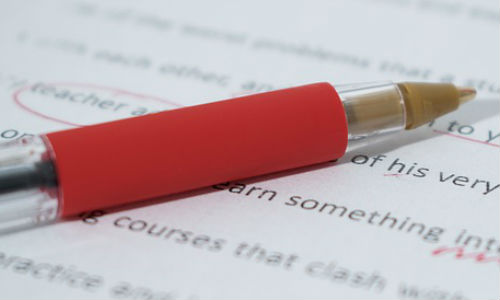Fewer copy editors in the newsroom—in fact, fewer editors in general—means that reporters must increasingly perform that function themselves. Before submitting a story or hitting “publish” on a website’s CMS, take an additional 15 minutes to review your work for accuracy. You’ll save yourself the embarrassment of writing a correction the next day.
Facts
Check these first three items while your story is on the screen:
1. Review spell-check suggestions and correct any actual errors.
2. Click links.
3. Call phone numbers.
Use a printout of the story for the remaining checks:
Put a ruler under each line as you read the text. Underline every fact, and then double-check each one, including:
• Names and titles of people, places and companies – Also, does each second reference (Jones) have a first reference (Mary Jones)?
• Numbers and calculations – Do the numbers add up? Is it millions or billions? Are the percentages correct?
• Dates and ages – Watch references to “next month/last month” when the month is changing.
• Quotes – Are quotes accurate and properly attributed? Have you fully captured what each person meant?
• Superlatives – What’s your source that something is the biggest, oldest, etc.
Grammar
Check each sentence for correct use of:
Subject-verb agreement – Also, are you consistent in your use of either the present or the past tense to tell the story?
Plurals and possessives.
Spelling
Read the story backwards, checking the spelling of each word. Here’s a dictionary.
Fairness and context
Terms – Define or eliminate unfamiliar terms, such as acronyms and jargon.
Fairness – Have all stakeholders been contacted and given a chance to talk?
Missing – Does the story leave any important questions unanswered?
Context – Does the reader have the context to understand the story?
Your own common errors
• ____________________________________________________________
• ____________________________________________________________
Final checks
Read the story aloud.
Have someone else read it.
Accompanying elements – Run the previous checks on the story’s headlines, cutlines, sidebars, photos, graphics, videos and podcasts. Check for inconsistencies.
Thanks to these sources for inspiring this checklist:
Steve Buttry’s Accuracy Checklist
Detroit Free Press Accuracy Checklist
Daphne Gray-Grant’s “Preventing goof-ups: 10 proofreading tips”











